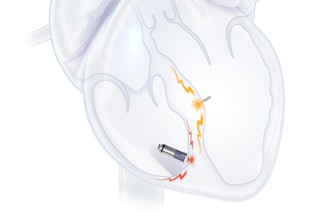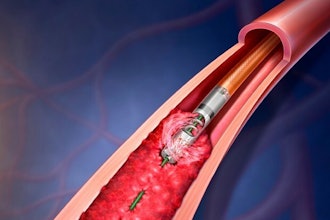
GE Healthcare and Lantheus Holdings have announced that the recent Phase III clinical trial of their investigational radiotracer, flurpiridaz, has met its co-primary endpoints of exceeding a 60 percent threshold for both sensitivity and specificity for detecting Coronary Artery Disease (CAD).
The findings, shared at the American Society of Nuclear Cardiology (ASNC) Congress, in Florida, U.S., also demonstrate flurpiridaz Positron Emission Tomography (PET) has higher diagnostic efficacy and image quality in patients with suspected CAD, compared with Single Photon Emission Computed Tomography (SPECT) Myocardial Perfusion Imaging (MPI), the predominant procedure used in nuclear cardiology today. SPECT MPI represents approximately 6 million procedures per year in the U.S.
The Phase III Open-Label Study, which involved over 600 patients across sites in the U.S., Europe and Canada assessed the diagnostic efficacy of flurpiridaz in detecting CAD, the most common form of heart disease and the leading cause of death globally, with invasive coronary angiography as a standard of truth. More than 120 million people are affected by CAD globally each year and in the U.S. alone, approximately 20 million adults have CAD, with nearly 383,000 deaths recorded in 2020.
If approved, this investigational agent would offer the advantages of 18F, with broad available distribution and a half-life of almost two hours, removing the need for it to be manufactured in the immediate vicinity of the imaging department. This longer half-life could also make Flurpiridaz (18F) Injection suitable for exercise stress testing, which is not feasible with existing cardiac PET radiotracers.
Dr. Tim Bateman, MD, FACC, co-director of the Cardiovascular Radiologic Imaging Program at Saint Luke's Hospital, Missouri, US, shared: “These results are truly promising for the nuclear cardiology community and CAD patients. From ASNC’s inception, its leaders have laid out the specifications for an ideal myocardial perfusion tracer. In my view [18F]flurpiridaz could meet this goal, expanding how PET MPI can be used to image CAD patients moving forward.”
Dr. Francois Tranquart, MD, PhD, Global Head of Clinical Development for GE Healthcare Pharmaceutical Diagnostics, Research and Development, said: “The positive Phase III trial results are a key step towards future approval of Flurpiridaz (18F) Injection as a potential new cardiac PET agent which could improve the detection of coronary artery disease. This is another example of GE Healthcare investing in our portfolio of Molecular Imaging products to help improve diagnostic accuracy and patient outcomes.”
GE Healthcare has led the funding and development of [18F]flurpiridaz, and, if the imaging agent is approved, will have global commercialization rights. Lantheus has collaborated on the development and will also collaborate on potential commercialization through a joint steering committee. Lantheus is entitled to royalties based on commercial sales.
GE Healthcare’s Pharmaceutical Diagnostics unit is a global leader in imaging agents used to support around 100 million procedures per year globally, equivalent to three patients every second. Its Molecular Imaging portfolio combines an innovative pipeline with established proprietary products across cardiology, neurology and oncology.






















